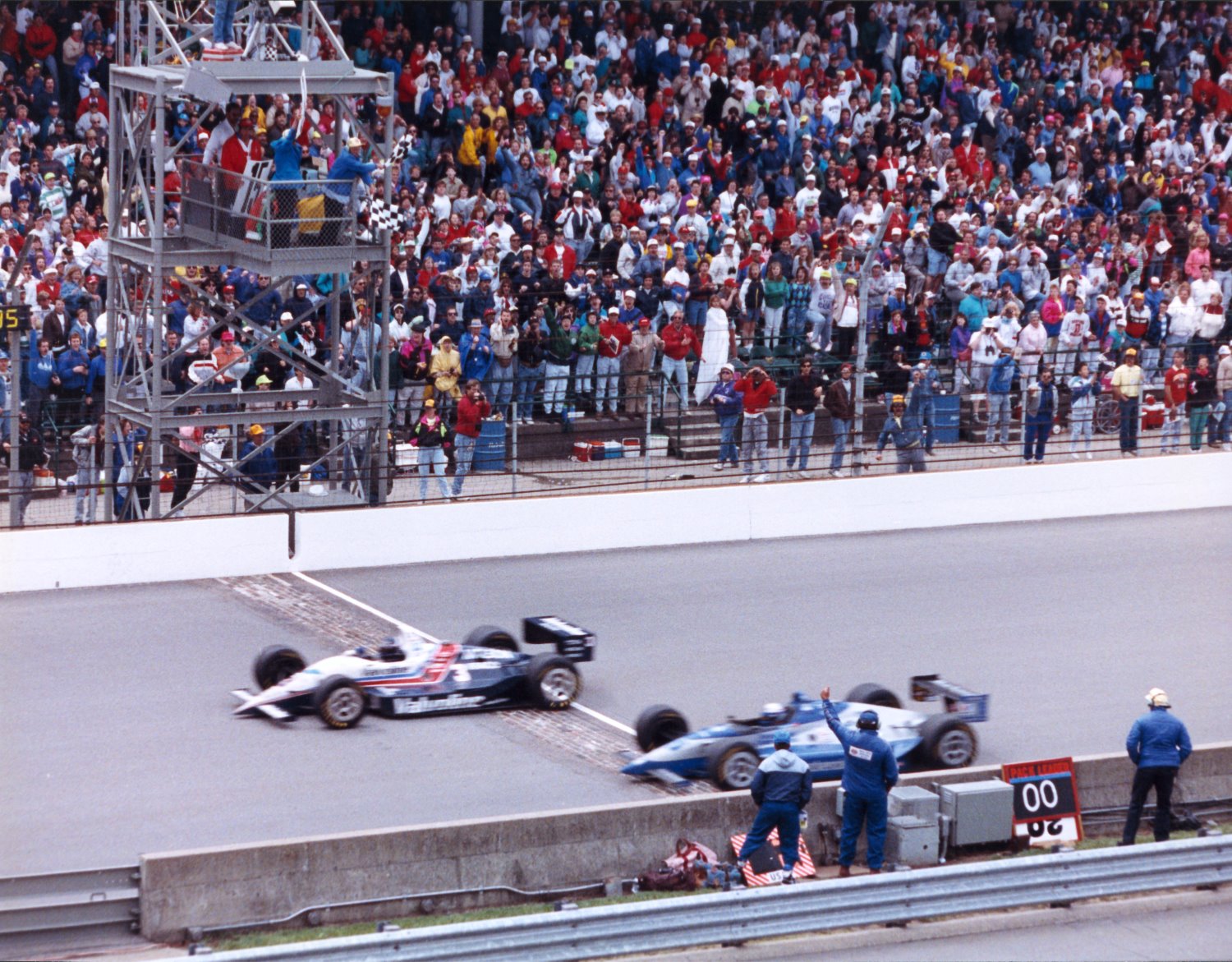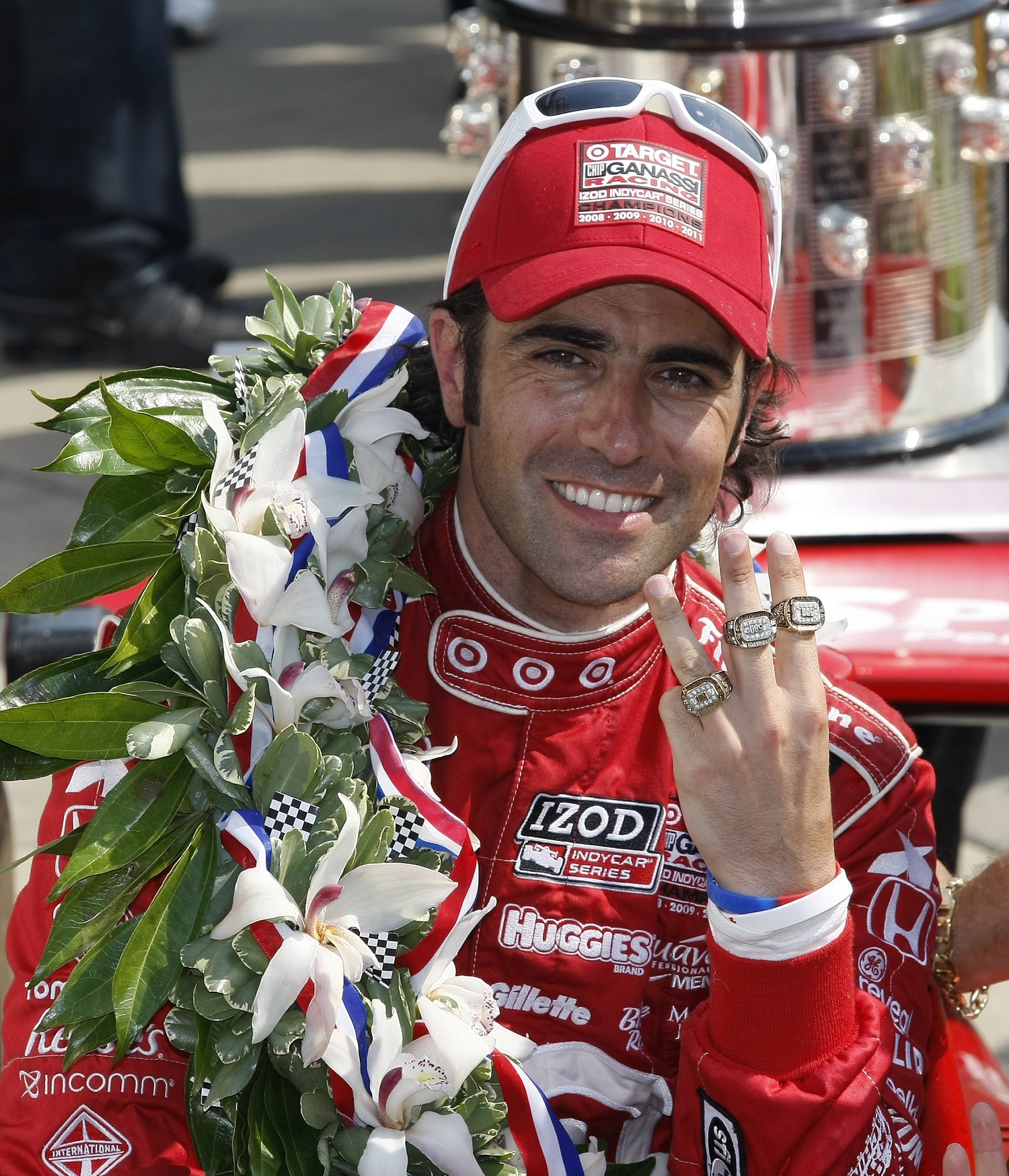The 2013 IndyCar class is one of best ever
 |
| The 1992 Indy 500 saw four Andrettis start, Jeff, John, Michael and Mario |
Let us begin by taking a brief look at two extremes.
On May 24, 1992 ten former winners of the Indianapolis 500 took the green flag. Three of these ten men, Rick Mears, Al Unser, and A.J Foyt so happened to be the only four-time winners in the history of the race. They would be joined by Bobby Rahal, Mario Andretti, Arie Luyendyk, Gordon Johncock, Tom Sneva, and Danny Sullivan.
Sadly, that iconic class of 1992 would quickly fade from the scene. Foyt, who was 57 that day, never raced again at Indy. Mears, who was injured in a brutal crash retired after the 1992 season. Unser, who finished third in that race, returned at Indy in 1993. Tom Sneva and Gordon Johncock likewise never raced at Indy again. Rahal, Andretti, Fittipaldi, and Sullivan each made two more starts. Luyendyk, then the baby of the group at 38, made nine more Indy starts, or as many as the rest of the 1992 class combined.
Moving ahead to the other extreme, Luyendyk would be the only previous Indy winner to start the 1996 race. While I have nothing but the utmost respect for the brave men and women, who willingly accept the risks of competing in this sport, I doubt you'll be reading any comparisons of the 1996 field and the 1992 field anytime soon.
 |
| The finish of the 1992 Indy 500 was one of the most exciting ever |
Fast forward to today, and we have a crop of IndyCar drivers, certainly better than the 1996 Indy class, but clearly not the class that did battle at IMS in 1992. Now, I would offer that the class of 1992 was a unique one in the sport's history, and a comparison between that group and really anyone is well, not fair. Not only were the men who did battle on that bizarre, unseasonably cold day the gold standard of the sport, but iconic figures from an era vastly different than today's; iconic figures, known familiarly to the public knew as Gordy, Super Tex, Big Al, Rocket Rick, Emmo, The Gas Man or simply, Mario.
Of course, it must be said that the actual race itself is not remembered well by all. Unseasonably cold temperatures resulted in numerous crashes, and lengthy caution periods. Also, Michael Andretti, who dominated the race fell victim to a failed fuel pump with a 30 second lead and 11 laps remaining. Adding injury to insult, Andretti's father Mario and brother Jeff were hospitalized from injuries received during the race.
Al Unser, Jr. would capitalize on Andretti's misfortune and add another likeness from the race's most accomplished family to the Borg-Warner trophy. Still, even by the all too familiar standards of cool, methodical Unsers rejoicing at the expense of dominant, seemingly can't catch a break Andrettis, the outcome that day seemed, beyond cruel.
However, what you cannot dismiss is the collective resume of those who took the green flag. Simply put, there was not nor has there been since, such a collective gathering of the sport's icons. Despite the race's numerous forgettable moments, those who recall the day, can justifiably cherish the memory of that incredibly unique moment in time.
Today, people don't really romanticize IndyCar like they did then. Of course, the sport has been grossly mismanaged over the last two decades resulting in a litany of problems, many of which have been outlined in this space. But, lets be clear on this: for all the issues facing the sport, the current crop of drivers is not one of them.
 |
| Dario Franchitti's three Indy 500 wins is part of the formidable class of 2013 |
To begin, if you use the "prior accomplishment" metric that we used for the 1992 Indy 500, the group that will take the green flag in six weeks at St. Petersburg is as strong a crop as the sport has seen in quite a while. Certainly, it is the best group since the merger in 2008. Scott Dixon, Dario Franchitti, Sebastien Bourdais and Helio Castroneves all rank in the top-12 for all-time IndyCar wins. Dixon, Franchitti, and Castroneves, of course boast 7 Indy 500 wins among them. Further, Dixon and Bourdais are at an age, their early 30s, in which historical evidence suggests that may yet to have even entered their prime years. Ryan Hunter-Reay, for example, enjoyed a breakout season in 2012 at the age of 31.
However, even if their careers were to end tomorrow, Dixon, Franchitti, Castroneves, Bourdais, and to a lesser extent Will Power, are already all-time greats.
Now, I could give a historical perspective on the accomplishments of all the above drivers. For example, Franchitti and Castroneves will each be chasing Indy win #4, something that you have to go back to the 1980s and the days of Johnny Rutherford and Al Unser to find. However, let's briefly take a look a closer look at the quietly incredible career of Dixon.
Last summer, after Dixon won the Mid-Ohio race, which tied him with Rick Mears for 29 career wins, I wrote an article discussing Dixon's tremendous career. I argued that from a historical perspective Dixon, who turned 32 last July, has conceivably yet to even entered his prime years. For evidence suggesting this, people needed to look no further than Dixon's teammate Franchitti, who has enjoyed his best years in his mid-late 30s. Referencing the records of Franchitti, Johnny Rutherford, Fittipaldi, Bobby Unser and others, I suggested the best from Dixon is actually yet to come.
In short, there is incredibly compelling historical evidence to indicate Dixon will surpass Mario Andretti's 52 wins for second on the all-time list.
 |
| Hunter-Reay has helped show that, yes, Americans can drive |
And when you include Hunter-Reay and Tony Kanaan with Dixon and the rest, there are 12 Indy car style championships, and a combined 174 Indy car wins (It should be noted, I am including Justin Wilson, who is expected to sign with Dale Coyne Racing but yet to be confirmed) in the current field. By comparison, in 2008 the drivers who competed the full-season boasted a pedestrian total of 75 victories and 4 championships, when the green flag dropped at Homestead.
Even if you go a little further back to the CART days, today's field is incredibly strong. For example, the 2001 CART field, one I believe was exceptionally strong, only boasted 108 wins and four championships when the green flag fell in Monterrey, Mexico that season. Granted, many of those drivers have gone on to exceptional careers and currently contribute to the impressive aggregate resume of this year's crop.
Of course, it must be said, this type of discussion is inherently subjective, and I'll even concede the "prior accomplishment," metric has its flaws. For example, while numerous Indy legends competed in that 1992 race, many of them such as Sneva, Johncock, and Foyt were well past their prime, and not significant factors either in the race, or any time during the month.
Also, one reason the current field boasts more career wins, is drivers nowadays tend to stay in IndyCar longer. The days of Jacques Villeneuve, Alex Zanardi, Juan Pablo Montoya, Cristiano da Matta, and Bourdais parlaying IndyCar success into Formula One rides seems over. While I don't know this for certain, I've not heard an "IndyCar driver to F1," rumor in quite a while.
Further, it seems the NASCAR exodus that began to popularize during the middle of the 2000s has ended with Danica Patrick. Sam Hornish, Franchitti, A.J. Allmendinger, and Patrick all sought riches down south, as the opportunities in open-wheel became less and less. However, the open-wheel exodus to NASCAR, at least for the time being, seems over, thus keeping accomplished drivers in IndyCar.
Another element that the IndyCar class of 2013 can hang their hat on, is the number of IndyCar ladder graduates that will compete in the series. For starters, each of the last three Indy Lights champions (Tristan Vautier, Josef Newgarden, and J.R. Hildebrand) will be competing. Five other top-division junior series champions (Dixon, Kanaan, Hunter-Reay, Oriol Servia, and Simon Pagenaud) are in the series. Further, they are joined by a host of graduates, James Hinchliffe, Ed Carpenter, Charlie Kimball, Simona de Silvestro, Graham Rahal and Castroneves to name a few.
In other words, a ladder program that for whatever reason did not graduate its champions to the top division during the last decade, is now producing promising talent.
Still, talent aside, IndyCar clearly has it problems. Further, frustration with the sport's management in addressing said problems is a valid, appropriate issue to explore and discuss. However, it is equally valid and appropriate to not allow the sport's pathetic management to preclude us from acknowledging its very accomplished field of drivers.
And a look at the numbers tells us this is as accomplished a field as we've seen in quite a while. Sure, Franchitti, Dixon, Castroneves, Power, and Bourdais may not move the needle like Foyt, Andretti and Mears. But, then again, who does? Further, men like Dixon, Bourdais, Power and Hunter-Reay with established resumes at the top-level, have from a historical standpoint, just begun to enter their prime racing years.
So, when the class of 2013 takes the green flag in six weeks, lets just remember that despite the sport's numerous problems, we will be watching a very good field; a very good field that boasts some of the sport's all-time greats, along with as promising a group of younger drivers than we've seen in decades. And while the class of 2013 will not call to mind the nostalgia and Foyt, Andretti, and Mears, it will be one chasing history on numerous levels. And we haven't said that in a really long time.
Brian Carroccio is an IndyCar columnist for AutoRacing1.com. He grew up around racing as the son of a longtime SCCA crewman. His first vivid memory of Indy car racing is Danny Sullivan’s 1985 “Spin and Win," at Indianapolis. Brian lives in Rockville, MD.
As a lifelong fan of the Washington Redskins his favorite colors are burgundy and gold. He is also a passionate supporter of Manchester United.
For insight on IndyCar racing, and thoughts on other topics of interest to Brian, you can follow him on Twitter @BrianC_AR1. Also, feel free to contact Brian by email at bricarr2@aol.com.
